Cleveland 547
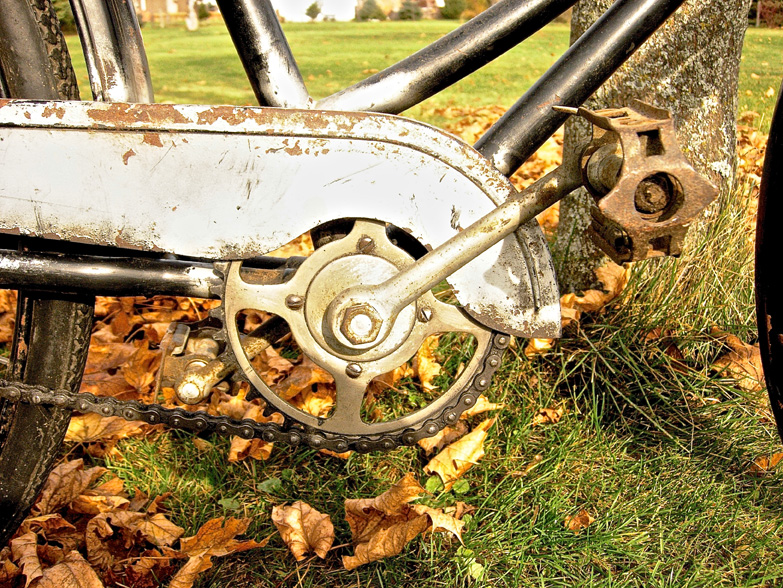

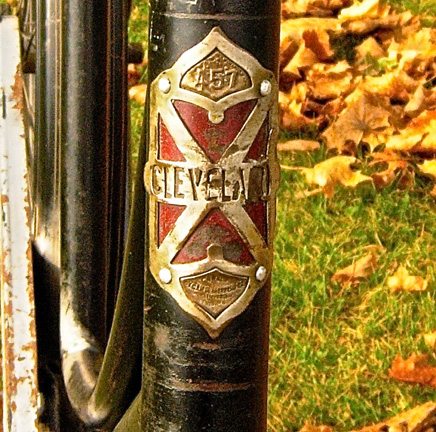


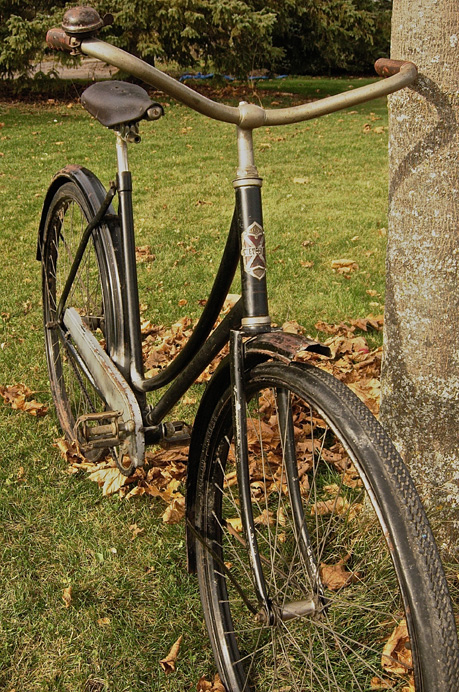
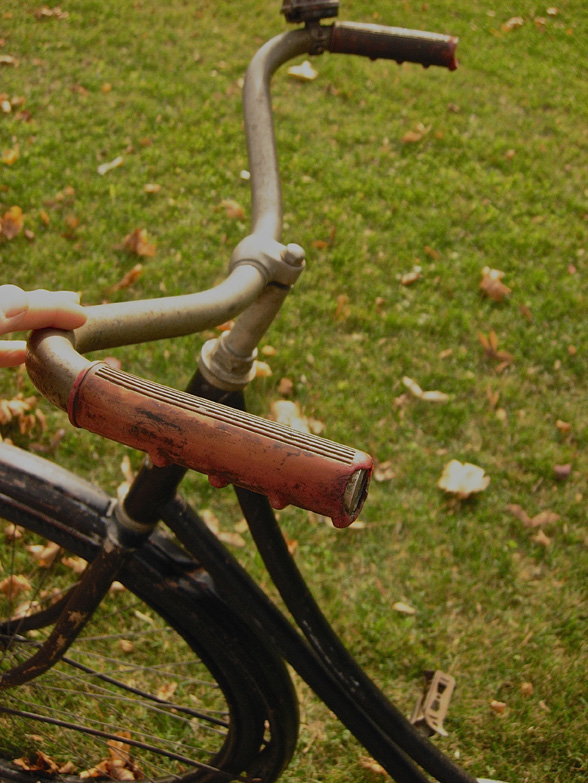
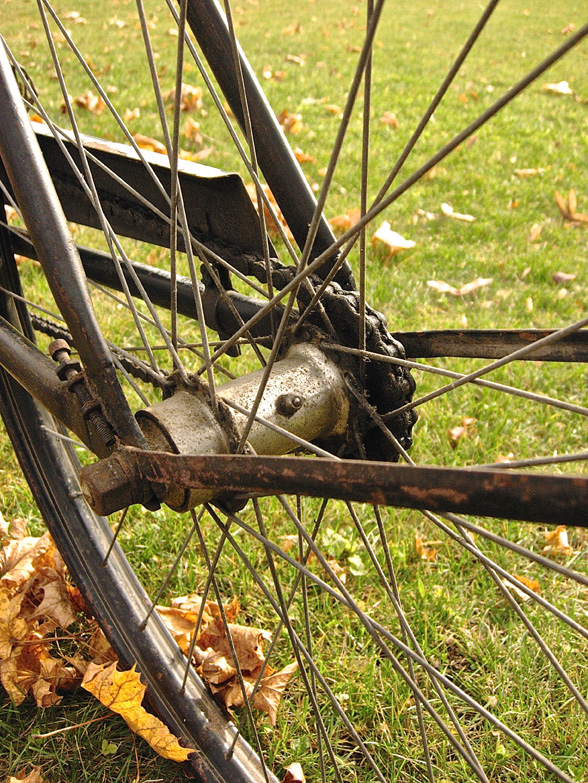
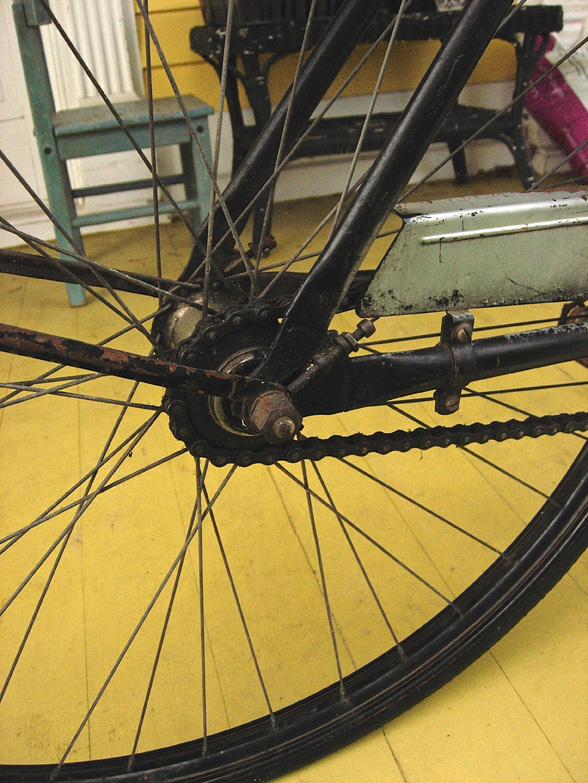
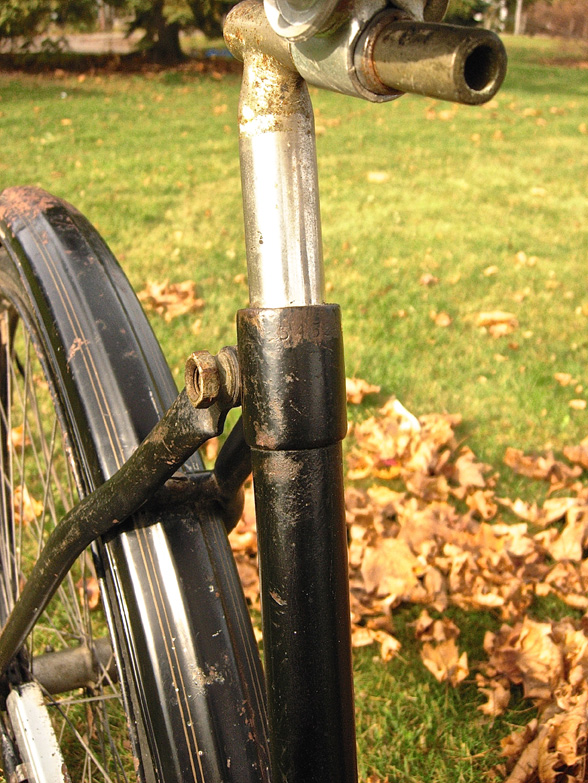
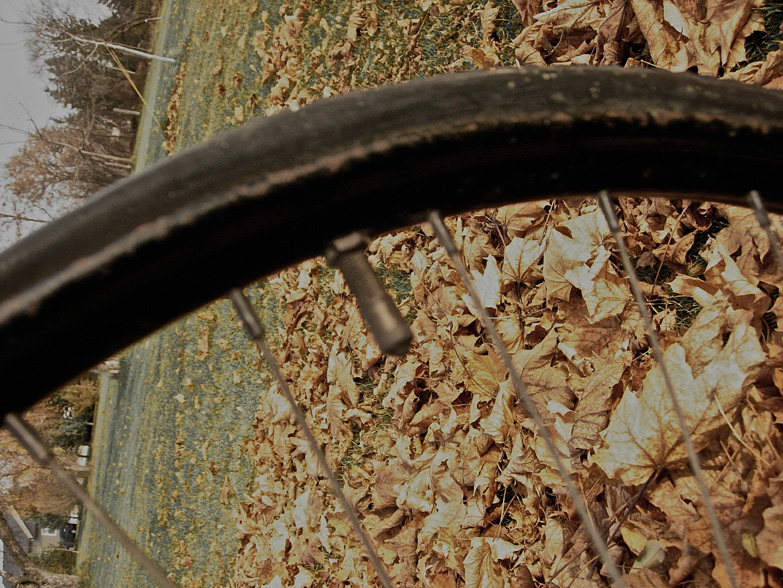 Hello,
Hello,
I'm researching for an essay (deadline looming!) on "a favourite object." and have spent so much time looking for
reference too know availe that I am running out of time!!
I've had this beautiful bike over 20 years and have always wanted to find out about it, but… well, you know how life is!!
I understand you may not be able to answer right away but even if I don;t get the info in time for my essay I would still love
to find out about it and any help would be greatly appreciated. I'd love to know if they grips , guards etc are original.
I have taken pictures i can send it are open to this request. Thanks so much<, Laurie
Here is everything I can see on the bike:
• On badge Cleveland 457 - Weston On. so it's after 1917, right?
• axles have sweet little caps you can open to pour grease in!
• One valve cap made of brass!
• double gold pin stripes on rims and fenders
• seat has this written on it but can't see logo No 28 A
• serial number - 54326 ---- I can't find any letter in front of this number -- but the metal under the pain looks yellowish
not silver!
• number under base of bike - 8135 ( I think)
• tires are Dunlop Rangers 28 x11/2 with a little 6 ? on the right of the name. Rubber is pretty crunchy.
• has tubes. One's flat, the other fills up in about 8 pumps then leaks out slowly.
• likes like forks have been painted black but the silver is showing through
• looks like the chain guard has been spray painted silver
• peddles have rubber grips - parts broken off or gone.
• weighs 31 pounds
• chain guard light and pliable metal (aluminum?)
• steel bell on backwards!
UPDATE! I found this in a 1918 catalogue !
Here's what it says:
Cleveland Ladies Roadster. Model 457
(B grade equipment ), 20" or 22" frame
Retail list, Net . . . .
"The only difference between Grade "A" and "B" models is the equipent.The frames and
every other part bicycles are the same in both models
Unfortunately, no picture of mine or price
Looks like the A model has laces to protect from the chain.





C'mon folks! This young lady has to do an essay on her "favourite object" which at the moment is her CCM bicycle. But she needs info and I know there are those on here who could give her some. We can't let the venerable old Cleveland get anything less than an A++.
John
Hi. The 1918 Catalogue you found online is your best source to detemine what's original on the bike. The Weston headbage means it was made in 1918 or later. CCM started using letters in their serial numbers in 1921 (starting with A) so the bike was made between 1918 and 1920. Since it's in the 1918 Catalogue you can refer to the bike as "circa 1918." CCM used wooden rims up to 1925, so I don't know if the metal rims were optional equipment when the bike was new or put on later when the wooden rims wore out - someone else can answer that one. The chainguard looks to be added later but check the 1918 catalogue for that design. If the frame has no pinstriping on it then it was probably repainted. The fenders have pinstriping. The seat post and pedals are original. The saddle might be original.
One thing you add to your report is the bare metal parts were nickel-plated, not chrome plated. Chrome plating came in later years (exact year anyone?). Also, yours doesn't have the famous chainwheel sprocket with the letters CCM in the metal, because that was started in 1935.
Your bike is a ladies frame so you can also research online the effect that cycling had on the lives of women starting in the 1880s and 1890s. It provided many women of the Victorian period with their first experience of freedom, and Bloomers (pants for ladies) were first invented for riding bicycles!
Hope that helps. Best of luck. -Brian R. (grade 7 history teacher).
Dear John and Brian R, Thank you!
Your info is MOST helpful. I just checked tjhe catalogue and yes, there metal was an option but it says:
"Owing to thehrotage of Steel Rims, we jave been obliged to discontinue listing this line for the present time"
So that means they WERE wood. cool. I'll be becasue of the war they were rationing metal.
I was heading in toward teh women and cycling angle but had no idea that bloomers were invented
just for cycling! This is so exciting. I feel like Sherlock Holmes!
Thanks again, i am now rejeuvenated to do more research tomorrow,thanks again,
~ tally ho! Laurie
Hi Laurie,
It is nice to see that the subject of your essay is an early CCM ladies bicycle. I looked at your pictures and have the following observations to make:
-the frame is pin striped in gold. This was done be hand using fine brushes in the factory by some very skilled people, which were usually women.
-the wheels and fenders are also black with gold pin stripes, but I suspectthat both the wheels and fenders may have been changed after the bicycle was made. Wooden rims were standard on a 1918 bicycle, however, steel rims were offered as an option, but were not available towards the end of WWI. This may have been due to the high requirements for steel for the war effort. The rear wheel has an early style CCM Hercules hub without a brake side arm This prevented the rear hub from spinning in the frame when the brakes were applied, if the wheel nuts were not extremely tight. Brake side arms appeared around 1926. Early CCM Hercules rear hubs were friction drive, meaning that when the bike was pedalled forward, two circular pieces of steel were pushed together. After about 1920, CCM used two pieces with jagged teeth that came together when the bike was pedalled forward. This was a better, more reliable system. Braking action occured when the pedals were moved backwords, and a triangular wedge or wedges were forced against the steel hub casing. The little fittings on the hubs took a special heavy oil which was offered by CCM and something like modern 30 weight oil. Too much oil in the hub could impair braking performance.
-the chain guard appears to be from the 1930's or early 1940's and is not original to the bike. Early ladies bikes often had special chainguards that you may be able to find in the 1918 CCM catalogue.
=the handle bar grips are not original. The originals were probably sewn leather.
-early fenders usually had a curved cross section. On ladies bikes there was usually a series of holes at the edges for tying lace.
-the seat is not original. The original would have been leather, but much wider at the back (7 or 8"), and prerhaps 10" long. Examples can also be found in the 1918 catalogue.
-the front fork of your bicycle has a special crown (top section), that was only used by CCM on their Cleveland models and the Flyer and Road Racer bicycles. It has a flat, thin top section made out of a single piece of steel. Other CCM brands (Columbia, Red Bird, Perfect, Massey etc.) used there own distinctive fork crowns. The CCM Cleveland bicycles first appeared when CCM took over a Cleveland bicycle manufacturing plant in 1899. Prior to that, the Cleveland name was associated with the American manufacturer H.A. Lozier. The CCM Cleveland branded CCM's dissappeared in the early 1940's.
-The crank and pedals are original and the crank axle has triangular tapered ends. The crank arms are pushed onto these ends tightly and a nut is then put on tightly to hold the arms in place. CCM pioneered this type of triangular cotterless crankset, and it was later known as the "Triplex" crank.
I hope this helps. If you have more questions, please post them and I will look at this thread first thing in the morning.
Good luck with your paper!
John Williamson
Nice write-up John.
I think you are right about the fact that the wheels, fenders, chainguard, grips and seat were added at a later date.
Especially since the frame/fork has no pinstripping and the rest does, it might of been repainted a long time ago.
Seats looks like a Wrights.
But i would tend to think the handlebars have the correct look and nickel to be originals. A little wide for a ladies bike, but who knows.
I have a butchered ladies Cleveland frame and sprocket just like yours with serial #71xxx, and they are probably made between 1917-1921 like you said. My frame (what is left of it) is marroon and pinstripped.
Laurie, to see what John means about the fenders being added later, search on this site (top right of screen) for my forum thread titled "Gendron 855 Project". Like your Cleveland this Ladies CCM Gendron is also listed in the 1918 catalogue. It has the correct round fenders with the little holes for the fender skirt protector. This bike also has the correct rear hub and handlebars, but the saddle and pedals were added later. I'm in the process of changing the steel rims back to correct wooden rims (front is wood, rear is steel).
To see an example of a laced fender skirt guard using holes in a rear fender and string, see my other thread "spoon brake needed." This bike was made in 1896 and is not CCM, but the idea is the same. In photos of that bike, you can also see leather wrapped hand grips. Finally, you can see that in 20 years the design of a Ladies frame didn't change much between 1896 and 1918. In fact, I have a 1947 CCM Ladies with basically the same frame as yours. -Brian
Thank you to Jdwillia and Locomation too for your wealth of knowledge. Yes i do believe that
the saddle is a Wright. Havent' found the model yet but will keep trying.
• I see in the catelogue there is Hercules Brake Oil and other oils. Would the brake go into the little spout
on the hub or on the hub? or is it for bearings etc?
- I just noticed that the front hub has a lid on the little spout but the back doesn't.
- fenders - there are in the catalogue, black and maroon both with gold striping.
I should mention that this "young Lady" is in her 50s going back to her old college (which now grants degrees) to
complet her degree in design. hahaha . All this research and essay writing is a bit overwhelming as i am new to it,.
your guidance is greatly appreciated~ Laurie
Hi Brian, I just saw your post... I see that your fenders are rounder. waht about the other option with gold stripes?
I wish they had a profile drawing in catalogue.
My peddles are Hercules Ladie's
Handle bars are model 962 in catalgue.
Bell is the "Electric Stroke" no. 255 (710) 2" gong.
My sprocket is the same as yours, and that is not in the catalogue .
off I got, thanks again Brian ~ Laurie
Hi,
congratulations on all this research.
If this tid bit can be of help....good.
In cars chrome was used as a decorative element starting in 1927.
You may know that chrome plating was used for bearing journals for longevity etc....
Radiators and other plated articles were nickel plated.
I had a Reo Wolverine and it was the first automobile that featured a chrome plated radiator surround.
Possibly, chrome plating was used earlier on bicycles.
Here is an ad featuring one of the first use of chromium or chrome.
I do not think that chrome was used on bicycles before 1927-28
Very interesting Frederick. I've just scoured the cataogue and can't see mention of Chrome
anywhere. not even on the ball bearings. They must be steel.
Does anyone know if when you bought your bike initially, were you allowed to customize it
did you buy it as is, then replace parts later if you needed to or chose to?
The company seemed very customer oriented.
If your rear hub says just Hercules it is the earlier one l. if it says New Hercules that would be there improved one . Lots of things can happen to an original looking bike in 90 years .
oh right, I just wiped off a ton of grub found " HERCULES". .. no new. Thanks DAVE
Chromium plating didn't become commericially available until late 1924, so you would not find it on anything prior to that. CCM didn't introduce chromium plating until the 1934 model year. By the that time, the vast majority of plated parts used on CCM bicycles were manufactured in-house (i.e. cranks, handlebars, stems, headsets, posts, hubs, spokes), so there is a very defined cut-off date. The major exceptions are the budget brands which often used some outsourced components for economical reasons and some routinely outsourced components such as saddles.
Thanks T-Mar.
DOES ANYONE KNOW :
if one could custom order a brand new bike. ie.
• Ladies' Roadster frame.
• with no holes in the fenders
• a specific chain guard
• best forks of Redbird
• Comfort handle bars etc.
Just wondering how much flexiblitly there was at the offset of purchase,
I believe the forum consensus has always been that CCM would customize your bicycle to vrtually any extent, provided the alterations were limited to standard stocked items, as listed in their catalogue. We rountinely see things like alternate hubs and colours that appear to be factory issue. The factory customized bicycles we see are generally from the 1930s and the practice seems to have been largely eliminated post World War II but there's no reason to believe it wasn't in practice prior to the 1930s.
Having said that, I have to agree with John that the features like the fenders, chainguard and grips are later replacements, Given the Weston head badge and purely numeric serial number, your bicycle should be 1917-1920 and most of the features align with this timeframe. However, the styles of fenders, chainguard and grips on your bicycle were simply not available from CCM at this time. The rims are another matter. They may or may not be original to the bicycle. If the bicycle was built shortly after the war's end they could be factory options.
The one mentioned option that I would question CCM providng is an alternate fork. During this era the fork crown design and the head badge were the only ways to distnguish one CCM brand from another. I would think that CCM would be very protective of the brand identity and be reluctant to muddy these waters by providing a non-matching fork.
As for your earlier question, the "spout" on the hubs are lubrication ports. They are intended to add oil or grease to the hubs. However, given the era, they would have have been used primarily for oil. Based on my readings, the preference of early cyclists was for oil. Hubs were oiled very frequently to flush out contaminants and oilers were routinely carried by cyclists in tool bags. Additionally, the early coaster brakes appear to have been designed for the brake sleeves to function best with oil. The earliest CCM coaster brake with brake sleeves designed to function with grease appears to been the Hercules 37, introduced in 1937.
The preference for oil during this period appears to have been due to the relatively poor quality of greases. Early greases apparently did not retain the oil well and would quickly harden once the oil leeched out. For the minority of cyclists who did use grease, the lubrication ports could be used to add oil to refresh the grease.
yes T-Mar a friend dof my=in wheo is also an officanado of bikes felt the rims might also be original , and if that were
the case perhaps the standard parts on the bike, but couldn't be offered for reordered after.
HA lozeier was certainly a smart biz man. Letting customers custome order like that, and allowing them to view the
factory when other were closed to the public endeared them to the public. thanks so much for all your time ~ L
Hi Laurie,
Although this is a minor point, I can tell you that the original nut at the top of the headset has been replaced with a newer style nut that became available around 1923.
Good luck on your essay!
John Williamson
hi John , I appreciate any bit of wisdom at all. I had to look up what a headset is.(!)
Thnaks so much, Laurie